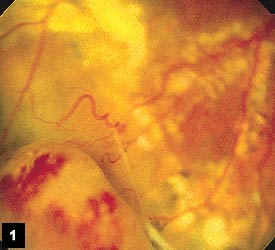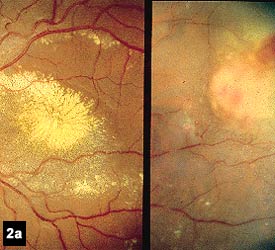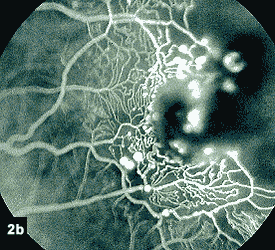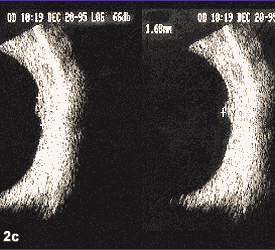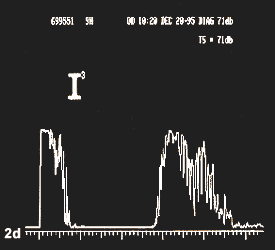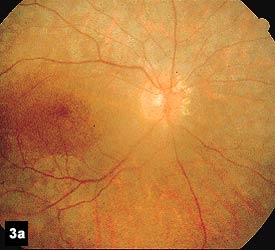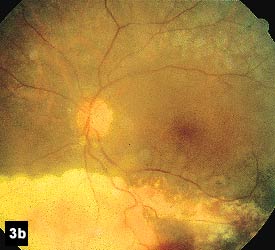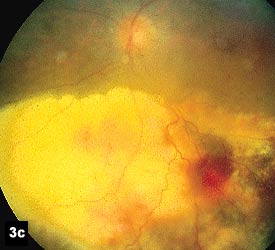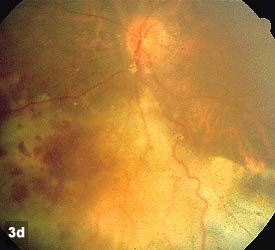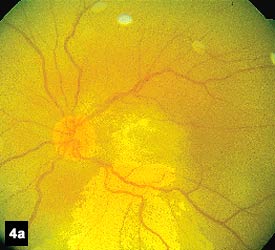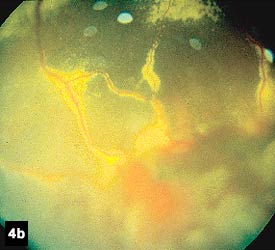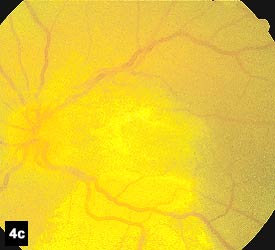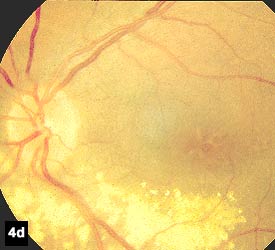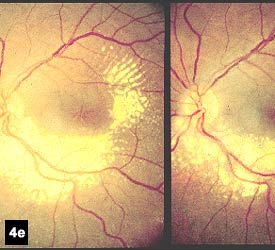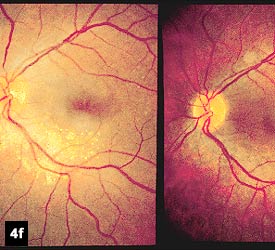Variety of approaches used in treating complications of vasoproliferative tumors
Though the small tumors are themselves benign, they are frequently associated with vision-threatening complications.
|
TAORMINA, Italy — Skill in diagnosis and the right choice of single or combined treatment are crucial to preserving vision with complications of vasoproliferative retinal tumors. Proper diagnosis and treatment can guarantee satisfactory functional results in most cases, according to Javier Elizalde, MD, of the Barraquer Ophthalmic Center in Barcelona, Spain.
Vasoproliferative retinal tumors are benign and relatively small in size, but they may often be the cause of vitreoretinal complications profoundly impairing visual acuity. At the Jules Gonin Club meeting here, Dr. Elizalde presented a series of cases in which different therapeutic methods were successfully applied.
He introduced his study by explaining that vasoproliferative retinal tumors are intraocular masses composed predominantly of vascular and glial tissue. These lesions were first described as “presumed acquired retinal hemangiomas,” and in 1995 they were reclassified by Carol Shields as “vasoproliferative tumors of the ocular fundus.” Fiona Irvine and coauthors recently suggested the term “reactionary retinal glioangiosis” based on histopathologic observations of the lesions. The tumor appears as a reactive mass containing blood vessels that may derive from sensory retina and possibly from glial cells or retinal pigment epithelial cells.
Retinal complications
“Most of the vasoproliferative tumors are solitary and are typically located in the inferior, inferotemporal or temporal region of the fundus,” Dr. Elizalde explained. “Clinical features of these lesions vary from case to case, but in general the lesion appears as a well circumscribed peripheral yellowish red mass with some associated exudation that usually extends from the lesion towards the posterior pole.”
As Dr. Elizalde pointed out, even cases with progressive exudation may develop a huge exudative retinal detachment. Patients with chronic pooling of exudate underneath the retina can finally develop subretinal fibrosis. Also some hemorrhage (intraretinal, subretinal or even within the vitreous cavity) may appear adjacent to the lesion. Cystoid macular edema, retinal pigment epithelium (RPE) proliferation and preretinal macular fibrosis can also be associated with these tumors.
|
|
“Between 1995 and 2000 we treated 19 consecutive cases. They were all solitary and unilateral tumors. The lesion was located in the inferior, inferotemporal or temporal side of the fundus in 15 eyes (79%). In 6 cases (31.6%), the tumors were classified as idiopathic. In 13 cases (68.4%) they were associated with other preexisting ocular or periocular lesions, including retinitis pigmentosa (5 cases), Coats’ syndrome (4 cases), familial exudative vitreoretinopathy (1 case), post-traumatic chorioretinopathy (1 case), uveitis (1 case). One case had progressed after an active maxillary sinusitis surgery,” Dr. Elizalde said.
The most common vitreoretinal complications included intra- or subretinal exudation, vitreous hemorrhage, preretinal fibrosis, cystoid macular edema and posterior vitreous detachment.
Differentiated treatments
The choice of treatment was based on the presence of potentially reversible causes of visual loss.
|
|
“Two tumors were asymptomatic and we decided to just keep them under observation,” Dr. Elizalde said. “They may remain stable for years or even regress spontaneously. Small lesions without extensive exudation (12 cases) were treated with laser photocoagulation or with external cryotherapy, which sometimes can induce dramatic tumor regression. Vitreoretinal surgery was necessary in 5 cases, in combination with laser or cryotherapy.”
He added that large and diffuse tumors (basal dimension greater than 10 mm) or cases that do not respond to other therapies can be managed by plaque radiotherapy. Also, in case of difficult diagnosis, transcleral resection of the lesion may be necessary.
“We had no such cases, but variables of this condition are many, and the best treatment option should be selected for every single case,” he said. “Combined techniques are often advisable. Functional results are usually favorable. Visual acuity improved in 15 of our cases (84.2%), which is indeed a very good percentage.”
|
|
|
A note from the editors:
Due to errors with the illustrations. Ocular Surgery News is republishing this article, which ran originally in the January 15, 2001, issue. Ocular Surgery News regrets the error.
For Your Information:References:
- Javier Elizalde, MD, can be reached at the Ocular Oncology Service, Centro de Oftalmología Barraquer, Muntaner 314, 08021 Barcelona, Spain; (34) 93-200-63-11; fax: (34) 93-200-24-69; e-mail: javierel@retemail.es. Dr. Elizalde has no direct financial interest in any of the products mentioned in this article, nor is he a paid consultant for any companies mentioned.
- Shields JA, Decker WL, et al. Presumed acquired retinal hemangiomas. Ophthalmol. 1983;90:1292-1300.
- Shields CL, Shields JA, et al. Vasoproliferative tumors of the ocular fundus: classification and clinical manifestation in 103 patients. Arch Ophthalmol. 1995;113:615-623.
- Irvine F, O’Donnell N, et al. Retinal vasoproliferative tumors: surgical management and histopathological findings. Arch Ophthalmol. 2000;118:563-569.

